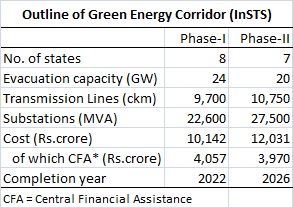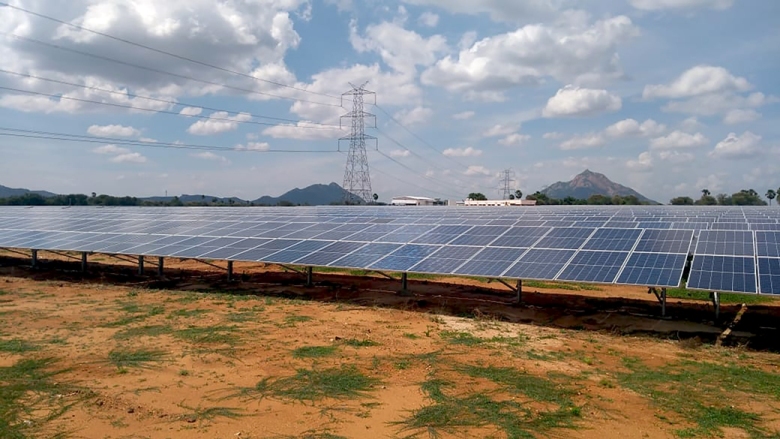The Cabinet Committee on Economic Affairs (CCEA), chaired by Prime Minister Narendra Modi, approved the Green Energy Corridor (GEC) Phase-II project, in a meeting on January 7, 2022.
GEC-Phase II aims at strengthening the intrastate transmission system (InSTS) in order to evacuate generation from renewable energy projects, aggregating 20 GW, spread over seven states – Gujarat, Himachal Pradesh, Karnataka, Kerala, Rajasthan, Tamil Nadu and Uttar Pradesh.
 The proposed network will comprise 10,750 ckm of transmission lines and around 27,500 MVA transformation (substation) capacity.
The proposed network will comprise 10,750 ckm of transmission lines and around 27,500 MVA transformation (substation) capacity.
The scheme envisages outlay of Rs.12,031 crore out of which 33 per cent (or Rs.3,970 crore) will be Central Financial Assistance (CFA) that will help offsetting InSTS transmission charges, thus keeping power costs down. The transmission network will be created over a period of five years—from FY22 (current year) to FY26.
The scheme will also contribute to long term energy security of the country and promote ecologically sustainable growth by reducing carbon footprint. It will generate large direct & indirect employment opportunities for both skilled and unskilled personnel in power and other related sectors.
Successor to GEC-Phase I
GEC-Phase II is in addition to GEC-Phase-I which is already under implementation in the states of Andhra Pradesh, Gujarat, Himachal Pradesh, Karnataka, Madhya Pradesh, Maharashtra, Rajasthan and Tamil Nadu. GEC-Phase I will help evacuation of 24 GW of renewable energy capacity and is scheduled for completion by end of 2022. The envisaged network is 9,700 ckm of transmission lines and 22,600 MVA of substation capacity. GEC-Phase I has an outlay of Rs.10,142 crore, including CFA of Rs.4,057 crore.
Also read: Cross-Border Grids Can Support Clean Energy Transition: Powerlinks Transmission
Objective
The ultimate objective of GEC-Phase II, as also GEC-Phase I, is to help evacuation of the targeted 450 GW of nationwide installed renewable energy capacity by 2030.
Featured photograph (source: Dollar Industries) is for representation only



